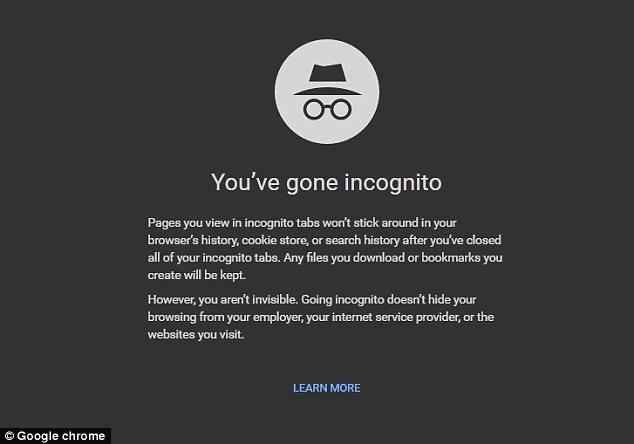In today’s digital age, privacy has become a major concern. With websites tracking your activities, advertisers targeting you based on browsing habits, and cyber threats looming, protecting your online presence is essential. One way to maintain privacy is by using Incognito Mode, also known as Private Browsing Mode in some browsers.
This article will provide a detailed exploration of incognito mode, covering:
• What incognito mode is and how it works
• The advantages of using incognito mode in daily life
• How it can help you financially
• The limitations of incognito mode
• Various tools and methods to enhance private browsing
What is Incognito Mode?
Incognito Mode is a privacy feature in web browsers that prevents the storage of browsing history, cookies, and site data after the session ends. While using incognito mode, the browser does not store:
✅ Browsing history – No record of visited sites
✅ Cookies & site data – No tracking for personalized ads
✅ Form inputs & passwords – No auto-fill storage
How Does Incognito Mode Work?
When you open an incognito tab:
1. A temporary browsing session starts.
2. Websites may still track your behavior, but once you close the session, all data is erased.
3. It does not hide your IP address – websites, ISPs, and employers can still see your activities.
While incognito mode offers some privacy benefits, it does not make you completely anonymous online.
Benefits of Incognito Mode in Daily Life
Using incognito mode can be beneficial in multiple ways:
1. Prevents Search and Browsing History Storage
If you share your computer with others or use a public device, incognito mode ensures that your searches and site visits are not recorded. This is useful when:
• Looking up medical symptoms or personal health information
• Researching sensitive topics
• Using public or shared computers
2. Helps Avoid Auto-Login and Auto-Fill Issues
Most modern browsers save login details and form data. While this is convenient, it can be a security risk when using shared devices. Incognito mode prevents:
• Automatic logins to accounts (Google, Facebook, etc.)
• Storing usernames, passwords, and personal details in form fields
3. Enables Multiple Account Logins Simultaneously
If you want to log in to two different accounts (e.g., two Gmail or Facebook accounts) without logging out of the first one, incognito mode allows you to do so easily.
4. Reduces Targeted Advertising
Websites track user behavior through cookies and use this data to show personalized ads. Incognito mode prevents:
• Saving cookies that enable advertisers to track you
• Price discrimination in online shopping based on browsing habits
5. Bypasses Paywalls & Free Article Limits
Many news websites restrict the number of free articles users can read. Since incognito mode prevents cookies from being stored, you may be able to bypass these paywalls.
6. Enhances Security on Public Wi-Fi
Using incognito mode on public Wi-Fi can minimize data exposure by preventing cookies and cache storage, reducing the chances of session hijacking.
How Incognito Mode Can Save You Money
1. Prevents Price Hikes Based on Your Browsing History
Many e-commerce and travel booking sites track your previous searches and increase prices accordingly. Using incognito mode can help:
• Get cheaper flight tickets by avoiding dynamic pricing
• Prevent price surges on hotel bookings and car rentals
2. Avoids Personalized Shopping Traps
Retail websites analyze your browsing behavior to show products you’ve previously searched for, often with inflated prices. Incognito mode ensures that:
• You see more neutral prices rather than artificially increased rates
• You can compare products without influencing the pricing algorithm
3. Helps Find Genuine Discounts
Some websites show “exclusive deals” based on your browsing history. Shopping in incognito mode prevents:
• Websites from recognizing your past visits and artificially inflating discounts
• Displaying targeted ads that pressure you into buying at higher prices
4. Prevents Subscription Renewal Price Increases
Some subscription services (e.g., Netflix, Amazon Prime) may offer different renewal rates based on your browsing behavior. Using incognito mode while checking prices can reveal unbiased renewal rates.
Limitations of Incognito Mode
While incognito mode offers privacy benefits, it does not provide complete anonymity. Here are some key limitations:
1. Does Not Hide Your IP Address
Your ISP (Internet Service Provider), employer, or network administrator can still track your online activity. For full anonymity, use a VPN (Virtual Private Network).
2. Does Not Protect Against Malware & Phishing
Incognito mode does not prevent malware attacks. Always be cautious while downloading files or clicking on suspicious links.
3. Does Not Prevent Tracking by Websites
Websites can still track you using:
• Browser fingerprinting
• Account logins (if you sign in while in incognito mode)
4. Does Not Hide Activities from Employers & Schools
If you’re browsing on a work or school network, administrators can still monitor your activity.
Tools to Enhance Private Browsing
Apart from using incognito mode, here are some additional tools to boost online privacy:
1. VPN (Virtual Private Network)
A VPN encrypts your internet connection, making your online activities private. Popular VPNs include:
• ExpressVPN
• NordVPN
• ProtonVPN (Free version available)
2. Privacy-Focused Browsers
Some browsers offer better private browsing options:
• Brave Browser – Blocks ads and trackers by default
• Tor Browser – Provides maximum anonymity using the Tor network
• DuckDuckGo Browser – Focuses on private searches and tracking protection
3. Private Search Engines
Instead of Google, use search engines that don’t track you:
• DuckDuckGo – Does not store search history
• Startpage – Provides Google results without tracking
4. Anti-Tracking Extensions
Browser extensions help block tracking scripts:
• uBlock Origin – Blocks ads and trackers
• Privacy Badger – Prevents tracking scripts
• Ghostery – Blocks ad trackers
5. Secure Password Managers
To avoid autofill risks, use a password manager instead of saving passwords in your browser:
• Bitwarden (Open-source and free)
• 1Password
• Dashlane
How to Use Incognito Mode in Different Browsers
Each browser has its own version of incognito mode:
Google Chrome
1. Open Chrome
2. Press Ctrl + Shift + N (Windows) or Cmd + Shift + N (Mac)
3. A new incognito window will open
Mozilla Firefox
1. Open Firefox
2. Press Ctrl + Shift + P (Windows) or Cmd + Shift + P (Mac)
3. Private Browsing Mode is activated
Microsoft Edge
1. Open Edge
2. Press Ctrl + Shift + N
3. InPrivate Mode will open
Safari (Mac & iOS)
1. Open Safari
2. Click File → New Private Window
Opera Browser
1. Open Opera
2. Press Ctrl + Shift + N (Windows) or Cmd + Shift + N (Mac)
3. A private browsing window will open
Final Thoughts: Is Incognito Mode Enough?
Incognito mode is a useful tool for protecting privacy, preventing price hikes, and reducing tracking. However, it is not a complete solution for online anonymity. For better privacy, consider using:
✅ A VPN – To hide your IP address
✅ Privacy-focused browsers – Brave, Tor
✅ Secure search engines – DuckDuckGo, Startpage
✅ Ad blockers & anti-tracking extensions
By combining incognito mode with additional privacy tools, you can browse the web more securely and protect yourself financially from unfair pricing strategies.
If you need more insights on specific privacy tools or advanced browsing techniques, read this article here.

